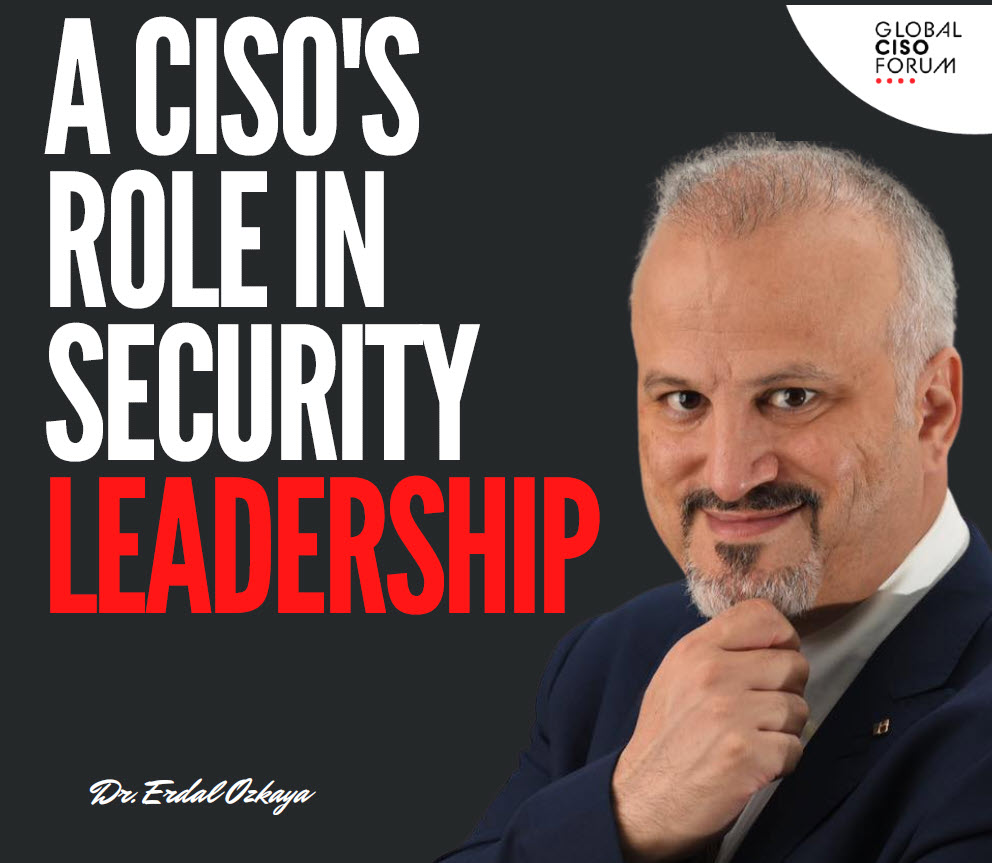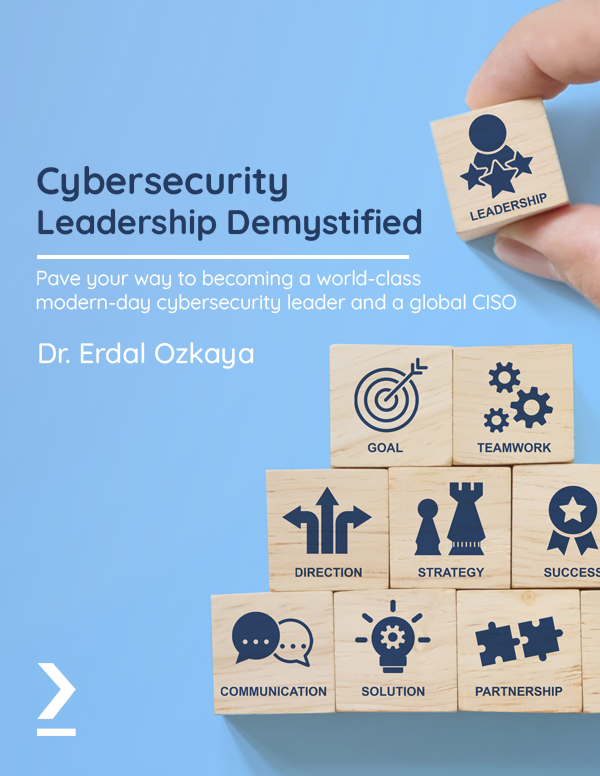
A CISOs role in Security Leadership – 6 Critical Tips ( Free PDF)
A CISOs role in Security Leadership
A short summary of a CISO’s role definition, and the six critical responsibilities underpin Chief Information Security Officer’s success, here free to download or browse at LinkedIn with out any download need .
Download right from this blog : A CISO’s Role in Security Leadership
View via LinkedIn : Click Here
What is a CISO ?
A CISO, or Chief Information Security Officer, is primarily responsible for an organization’s cyber security initiatives. CISOs are technologists, who can participate in high-level initiatives as business strategists. CISO’s ensure that IT systems comply with security and regulatory requirements. In summary a C(I)SO is the top Cyber executive of an organization. The Role CISO requires a combination of technical and soft skills, such as business acumen, leadership, communications and relationship building.
WHAT EXACTLY IS A CISO ?
Before we dive deep into the nuances of cyber chiefs’ career paths, it’s important to understand the nature of the role. So here is the 6 Facts you need to know about CISO role :
- Trusted “security” advisor – As a CISO you need to translate technical matters into the language of the business – helping non technological executives and boards understand the technical matters and help them make risk-informed decisions confidently
- Strategist – As a CISO, you need to get involved setting goals, determining actions to achieve the goals, and mobilizing resources to execute the “prioritized” actions which needs to be tightly linked to businesses strategy.
- Leader – As a CISO you need to have leadership skills not just to build an inspired and bonded diverse team but also set an example as a role model to create culture of constant learning, innovation, and active collaboration.
- Modern Marketer –Modern marketing is the ability to harness the full capabilities of the business to provide the best experience for the customer and thereby drive growth. As a CISO you need to evangelize cybersecurity capabilities to regulators, client prospects, insurers, and business partners — helping win new business, lower cost of capital, and maintain the license to operate.
- Change agent – CISO’s should be able to create a cyber culture where everyone in the organization understand cyber risks and help you to mitigate them
- Influencer – CISO’s should be able to influence critical stakeholders to support the cybersecurity transformation.

CISO : Cybersecurity Leadership Demystified
How to Become a CISO
There is no direct path to the CISO role. While this is true, its really important to hire the right talent. Being a CISO used to be a hard core cybersecurity role, however, the function of the CISO involves much more business leadership and risk management.
Today, a CISO must be able to help executives at C-suite level to understand risk as it is about bits. CISOs in any enterprise organization must-have skills to be able explain security for non techies, build and maintain critical relationships and communicate at both senior and operational levels. Soft skills are critical to evangelizing security initiatives and celebrating wins, which need to be expressed as business outcomes.
Soft skills are critical to evangelizing the agenda and celebrating wins, which need to be expressed as business outcomes. The CISOs who can develop those skills can ‘sell security’ to their peers and other business line executives. So who can become a CISO ?
- Experienced techies, such as cybersecurity architects, network security engineers, or IT Security Managers
- An experienced technology risk manager
- A CIO or technology leader with extensive experience building high performing teams, driving digital transformation, and sitting on executive committees
Who should not become a CISO
As a trusted security advisor in the past, I met many CISO’s who had no clue about cybersecurity, and unfortunately those CISO’s needed the most help . CISO’s should not be just hired based on experience in the company, or for just being a program delivery manager. CISO’s are much more then just a delivery manager , politician or someone who is network well to get the “hot” seat which pays well. Mark my words, the organizations they follow tis path will have ex CEO’s which blame interns for using weak passwords. ( Read the news article here )
I met many CISO’s depending on our “advisory” or they were great leaders but had no clue of “what was exactly happening in cyber landscape”
Areas of focus for a CISO

CISO Responsibilities
Some of the day to day tasks of CISO’s are :
Security Operations
Real-time analysis of immediate threats, and triage when something goes wrong.
Cyber-risk and Cyber Intelligence
Keeping abreast of developing security threats, and helping the board understand potential security problems that might arise from acquisitions or other big business moves.
Data Loss and Fraud Prevention
Making sure internal staff doesn’t misuse or steal data
Security Architecture
Planning, buying, and rolling out security hardware and software, and making sure IT and network infrastructure is designed with best security practices in mind.
Identity and Access management
Ensuring that only authorized people have access to restricted data and systems.
Program Management
Keeping ahead of security needs by implementing programs or projects that mitigate risks—regular system patches, for instance.
Investigations and Forensics
Determining what went wrong in a breach, dealing with those responsible if they’re internal, and planning to avoid repeats of the same crisis.
Governance
Making sure all of the above initiatives run smoothly and get the funding they need—and that corporate leadership understands their importance.
- A CISO is appointed to provide cyber security leadership and guidance for their organisation.
- The CISO within an organisation is typically responsible for providing strategic-level guidance for their organisation’s cyber security program and ensuring compliance with cyber security policy, standards, regulations and legislation. They are likely to work with a Chief Security Officer, a Chief Information Officer and other senior executives within their organisation.
- The CISO oversees their organisation’s cyber security program and ensures their organisation’s compliance with cyber security policy, standards, regulations and legislation.
- The CISO regularly reviews and updates their organisation’s cyber security program to ensure its relevance in addressing cyber threats and harnessing business and cyber security opportunities.
- The CISO implements cyber security measurement metrics and key performance indicators for their organisation.
- The CISO coordinates cyber security and business alignment through a cyber security steering committee or advisory board, comprising of key business and ICT executives, which meets formally and on a regular basis.
- The CISO coordinates security risk management activities between cyber security and business teams
- Overseeing incident response activities
- Contributing to business continuity and disaster recovery planning
- Developing a cyber security communications strategy
- Working with suppliers and service providers
- Receiving and managing a dedicated cyber security budget
- Overseeing cyber security personnel
- Overseeing cyber security awareness raising
The Essential 7 for CISO role?
As CISO – especially in a new organization – you need to balance between a Cybersecurity guru and business acumen. Of course you will need to start creating a cybersecurity strategy – or revise it if it exists – creating a budget , build your team but also spend time o manage the expectations of your stakeholders.
- Do you know what are you doing in your next 100 days Do you know all your assets , crown jewels – are they reflected in your 100 days plan ?
- What is your Incident Response Plan? Are you ready to recover from a cyber attack ? Did you asses the organization and presented the finding to the board?
- Are you up to date ? Did you prioritize the essential 10-15 critical few key controls, are they tested and ready for coverage and maturity?
- What is your scope? Are roles and responsibilities defined in writing and assigned to accountable executives and their teams ?
- Do you have a measurable cyber-resilient culture change program in place ? Don’t forget its CISO’s priority to work with the CEO/ Board and create a cyber culture organization wide , with Assume Breach in mind
- Do you know your key customers ? Did you start to reach them out and build / strengthen relation?
- Create / define your partners ! Leverage new innovations
Where do CISO’s stand today ?
The role of chief information security officer (CISO) is not what it was five or 10 years ago. According to those who find themselves in the role today, that’s not necessarily a bad thing.
In the past, it used to be that chief security officers (CSOs) were over-glorified IT security administrators, babysitting the firewalls, arguing with software vendors over botched antivirus signature updates and cleaning spyware off of infected laptops and desktop PCs. True, that’s still the role some CSOs in Middle East region find themselves in, but for the majority the responsibility has shifted to looking at the big picture and designing the programme that balances acceptable risks against the unacceptable.
In an ideal world, today’s CISO hires someone else to handle all those technical security tasks. Of course, the question is whether you can inspire them to do what you once had to do or if you’ll turn them off with an attitude of superiority.
Being a CISO used to be a hard core cybersecurity role, however, the function of the CISO involves much more business leadership and risk management. Today, a CISO must be able to help executives at C-suite level to understand risk as it is about bits. CISOs in any enterprise organization in the Middle East must-have skills to be able explain security for non techies, build and maintain critical relationships and communicate at both senior and operational levels. Soft skills are critical to evangelizing security initiatives and celebrating wins, which need to be expressed as business outcomes.
Cybersecurity is gaining importance due to the increased number of cyberattacks and the huge losses that victims are reporting. However, in many organizations the implementation of cybersecurity comes as a consequence of a threat or an attack. Organizations can decide to mount reactive, proactive and operational cyber-defenses, or a combination of the three depending on financial capabilities and levels of exposure to threats. Having a CISO will go through the three types of approaches to implementing cybersecurity and help the organization to choose the optimal cyber-defense strategy.
The best ways to foster an atmosphere of innovation
Everything starts with having and building a team which you can relay, a team that can take ownership of ‘client problems, a team that can benchmark against the best. As a leader, CISOs prime focus should be to create a culture of innovation and build effective teams, which can focus on the work that needs to be done. We need to embrace experimentation and risk as well as listen to the teams we build and challenge as necessary. If you can empower your team with a leadership that inspires and values them, the innovation fostering atmosphere will eventually manifest itself.
What is a Cybersecurity Strategy ?
A cybersecurity strategy is a plan for managing organizational security risk according to a defined risk tolerance for the organization to meet the business and organizational objectives and goals. In addition, the cybersecurity strategy shouldn’t be focusing being secure as possible, but on being secure as necessary and for that to happen, you must balance security investments to keep security assurances strong.
Once you do that then you also need to understand the ‘threat actor factor’. Sophisticated attackers will only choose avenues that they can exploit successfully. If you look for weakest links, know your vulnerabilities and try to not have any misconfigurations, minimize the human error and have good vendors to trust you should be okay and this will build even more confidence on getting the right support from the business as well as the IT teams.
CERTIFICATIONS
While certifications are good to show what you know, keep in mind that certifications don’t make one a stronger professional. Certifications won’t turn a CISO candidate from analyst to C-suite dweller overnight. But what they can do is offer expertise across the many areas CISOs must have basic knowledge of, if not in-depth expertise
- EC Council CCISO
- SANS Leading Cybersecurity Change , Build a Security based culture
- SANS Security Leadership Essentials for Managers
Based on a study by Digital Guardian 53 of the Fortune 100 CISOs held the CISSP (certified information systems security professional by (ISC)²) certification and 22 held the CISM (certified information security manager by (ISC)²) . The top five certifications held by Fortune 100 CISOs include CISSP, CISM, ITIL, CISA (Certified Information Systems Auditor by ISACA) and CRISC (Certified in Risk and Information Systems Control).
In Summary :
The CISO is the guardian of the organization, who build the cyber strategy be the advisor to the board and who is still a technical executive. CISO is also known as CSO (Chief Security Officer ) and VP of security.
The demand for business-centered technical CISOs will continue to grow, as having the right CISO will provide assurance to companies their strategic business partners, regulators, and customers that their cybersecurity capabilities are robust and fit for purpose.
And I for sure recommend you to aim to be a CISO as data breached soar, so will CISO’s paychecks.
If you want to learn more on how to be a CISO wait for my new book which should be published in Q4 2021.
Free resources
Global CISO Forum
- Building an effective cyber security culture
- Securing the support of individual execs will help to build momentum behind cultivating a cyber security culture
- Addressing the challenges of building a security team
- Strategising staffing based on models, budget, and organisation goals
- Identifying talent gaps
- Knowledge through success stories
- Industry specific insights and sharing of best practices
CISO’s challenges
CISO : Cybersecurity Leadership Demystified by Erdal Ozkaya
My new book will , which is planned to be published in 2021 will be a desk reference book for CISO’s and everyone who wants to be CISO….
You can find the details at Amazon (when ready) :
You can find the details at Packt (when ready) :
Global CISO Forum Social Media Accounts :
LinkedIn: https://www.linkedin.com/company/global-ciso-forum
You can watch many CISO related videos in my YouTube channel





